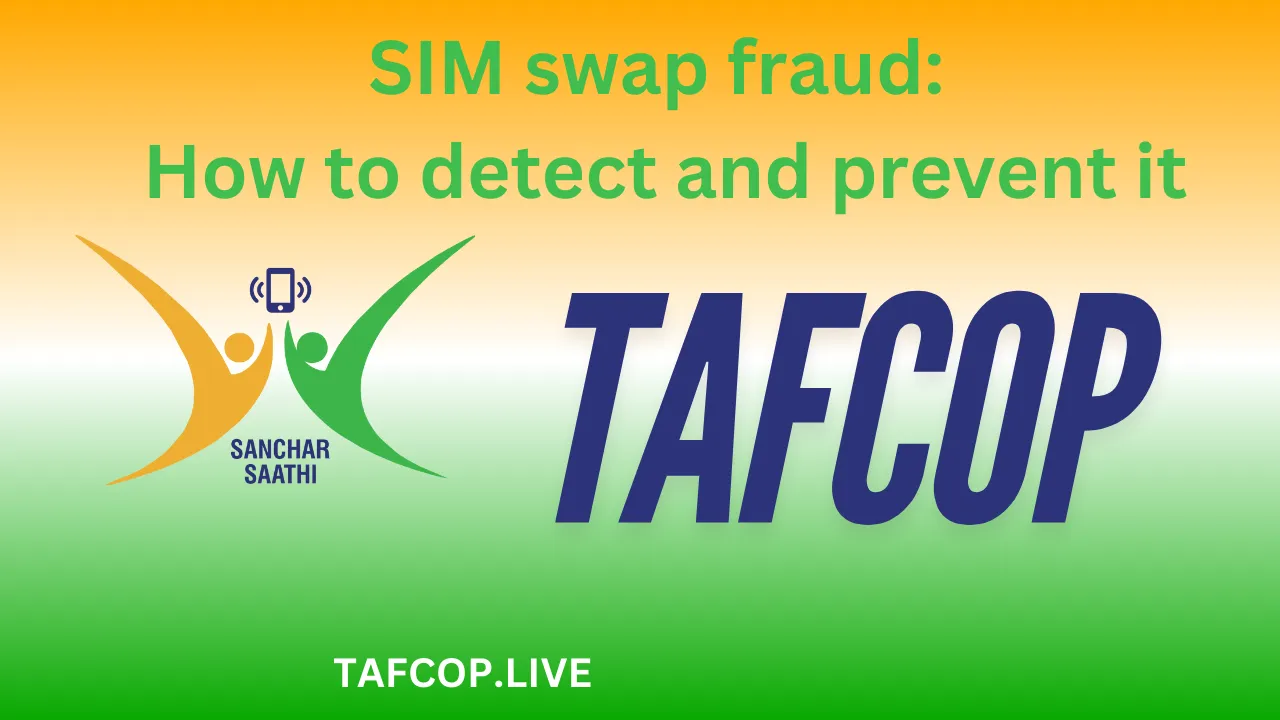The digital world is a playground for both innovation and deception. While technology makes our lives easier, fraudsters are always lurking in the shadows, ready to exploit any vulnerability. One such growing threat in India is SIM swap fraud—a sneaky trick where criminals hijack your phone number and gain access to your financial and personal information. Imagine waking up to find your phone network dead, only to realize that a fraudster has taken control of your number and emptied your bank account. Scary, right?
But here’s the good news: you can detect and prevent SIM swap fraud with a few proactive steps. Let’s dive deep into how this fraud works, how you can spot it early, and most importantly, how to safeguard yourself against it.
SIM swap fraud: How to detect and prevent it
To detect SIM swap fraud, watch out for sudden loss of mobile network, inability to make calls or send texts, and unusual login attempts to your online accounts. Prevent it by enabling two-factor authentication, setting up SIM lock protection, and regularly monitoring your financial transactions.
How Does SIM Swap Fraud Work?
SIM swap fraud is a sophisticated scam where cybercriminals gain control of your phone number by fraudulently transferring it to a new SIM card. Once they control your number, they can intercept OTPs, reset passwords, and access your sensitive accounts.
Here’s a step-by-step breakdown:
- Gathering Personal Information: Fraudsters collect your personal details through phishing, social engineering, or data leaks.
- Deceiving the Mobile Provider: They impersonate you and convince the telecom company to issue a new SIM card for your number.
- Taking Over Accounts: With access to OTPs and verification codes, they gain control of your bank accounts, email, and social media.
Example: Suppose you receive an email pretending to be from your bank, asking you to confirm your account details. If you unknowingly provide the information, fraudsters can use it to convince your telecom provider to issue a duplicate SIM in their control.
How to Detect SIM Swap Fraud?
Early detection can save you from financial disaster. Look out for these warning signs:
- Sudden loss of network connection even though your bill is paid.
- Unable to make calls or send messages despite having a full signal.
- Unusual notifications about account login attempts or password changes.
- Bank transactions you didn’t authorize.
Example: If your phone suddenly stops working while you’re expecting an OTP, be suspicious. Call your telecom provider immediately to check for any unauthorized SIM swap requests.
How to Prevent SIM Swap Fraud?
Prevention is always better than cure. Here’s how you can protect yourself from SIM swap fraud:
1. Enable Two-Factor Authentication (2FA) Without SMS
Use app-based authenticators like Google Authenticator instead of SMS-based OTPs. This makes it harder for fraudsters to access your accounts.
2. Set a Strong PIN for Your SIM Card
A SIM PIN prevents unauthorized SIM swaps. Check your mobile settings to enable it.
3. Beware of Phishing Attacks
Never share personal details over email, phone calls, or messages. Telecom providers and banks never ask for sensitive information via these channels.
4. Regularly Check Your Mobile Network
If your SIM suddenly stops working, contact your provider immediately to verify if a swap request was made.
5. Monitor Your Bank and Email Activity
Regularly review bank statements and email login alerts. Any unusual activity could indicate fraud.
What to Do If You Are a Victim of SIM Swap Fraud?
If you suspect that your SIM has been swapped, act fast:
- Contact your telecom provider and request to block the fraudulent SIM.
- Change passwords for all important accounts (banking, email, social media).
- Inform your bank to block unauthorized transactions and enhance security measures.
- File a complaint with the Cyber Crime Cell at https://cybercrime.gov.in.
Example: If you notice unauthorized bank transactions, call your bank’s customer service immediately to freeze your account and stop further fraud.
Are Indian Banks Liable for SIM Swap Fraud Losses?
Banks in India have certain responsibilities to protect customers from fraud, but the liability depends on how quickly you report the fraud. If you report the fraud within three days, you may not be held responsible for the financial loss. However, if you delay, the bank might not reimburse your money.
Key Differences Between SIM Swap and SIM Cloning
| Feature | SIM Swap | SIM Cloning |
|---|---|---|
| How it works | Transfers your number to a new SIM | Duplicates your existing SIM |
| Requires Telecom Provider Approval | Yes | No |
| Affects | Phone calls, OTPs, banking | Entire phone activity |
| Prevention | Strong authentication & SIM PIN | Secure device & avoid untrusted networks |
Final Thoughts: Stay One Step Ahead!
SIM swap fraud is a serious threat in India, but awareness and preventive measures can keep you safe. Always be on high alert for unusual network disruptions, suspicious messages, and unauthorized transactions. By enabling two-factor authentication, setting up SIM locks, and staying vigilant against phishing, you can protect yourself from cybercriminals.
“Cybersecurity isn’t about reacting—it’s about staying ahead of the game.”
Take control today and secure your digital identity before scammers get to it! 🚀

